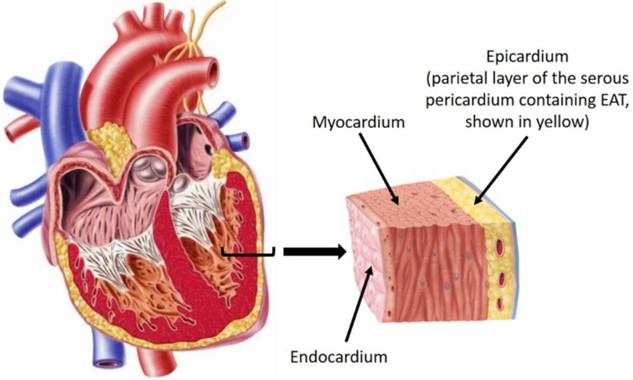The smooth, thin membrane that lines the chambers of the heart and forms the surface of the heart valves is the:
Pericardium.
Endocardium.
Myocardium.
Epicardium.
The Correct Answer is B

The endocardium is the thin inner lining of the heart chambers and also forms the surface of the heart valves.
Some possible explanations for the other choices are:
Choice A is wrong because the pericardium is the sac that surrounds the heart and consists of two layers: the fibrous pericardium and the serous pericardium.
Choice C is wrong because the myocardium is the thick middle layer of muscle that allows the heart chambers to contract and relax to pump blood to the body.
Choice D is wrong because epicardium is another name for the visceral layer of the serous pericardium that is fused to the heart and is part of the heart wall.
Nursing Test Bank
Naxlex Comprehensive Predictor Exams
Related Questions
Correct Answer is A
Explanation
The correct answer is choice A. True.
Blood flow through a capillary is controlled by a precapillary sphincter, which opens or closes due to the requirements of the cells supplied by the capillary.
This allows blood to bypass the capillaries when they are not needed and to increase blood flow when they are needed.
Choice B. False is wrong because it contradicts the true statement in choice A. A precapillary sphincter is a ring of smooth muscle that surrounds the entrance of a capillary and regulates blood flow into it.
It is influenced by local factors such as oxygen, carbon dioxide, pH, and temperature.
Correct Answer is D
Explanation

Circadian rhythm is the term for the biological clock that regulates the sleep-wake cycle and other physiological processes in the body.
Melatonin is a hormone that is produced by the pineal gland in the brain in response to darkness.
It helps with the timing of the circadian rhythm and promotes sleep.
Choice A is wrong because metabolic rate is not affected by light exposure, and thyroxine is a hormone that regulates metabolism, not sleep.
Choice B is wrong because the limbic system is a part of the brain that is involved in emotions, memory, and motivation, not sleep.
Thymosin is a hormone that stimulates the development of T cells, which are part of the immune system.
Choice C is wrong because the circulatory system is the system of blood vessels and organs that transport blood throughout the body, not a part of the brain that controls sleep.
Dopamine is a neurotransmitter that is involved in reward, motivation, and movement, not sleep.
Whether you are a student looking to ace your exams or a practicing nurse seeking to enhance your expertise , our nursing education contents will empower you with the confidence and competence to make a difference in the lives of patients and become a respected leader in the healthcare field.
Visit Naxlex, invest in your future and unlock endless possibilities with our unparalleled nursing education contents today
Report Wrong Answer on the Current Question
Do you disagree with the answer? If yes, what is your expected answer? Explain.
Kindly be descriptive with the issue you are facing.
